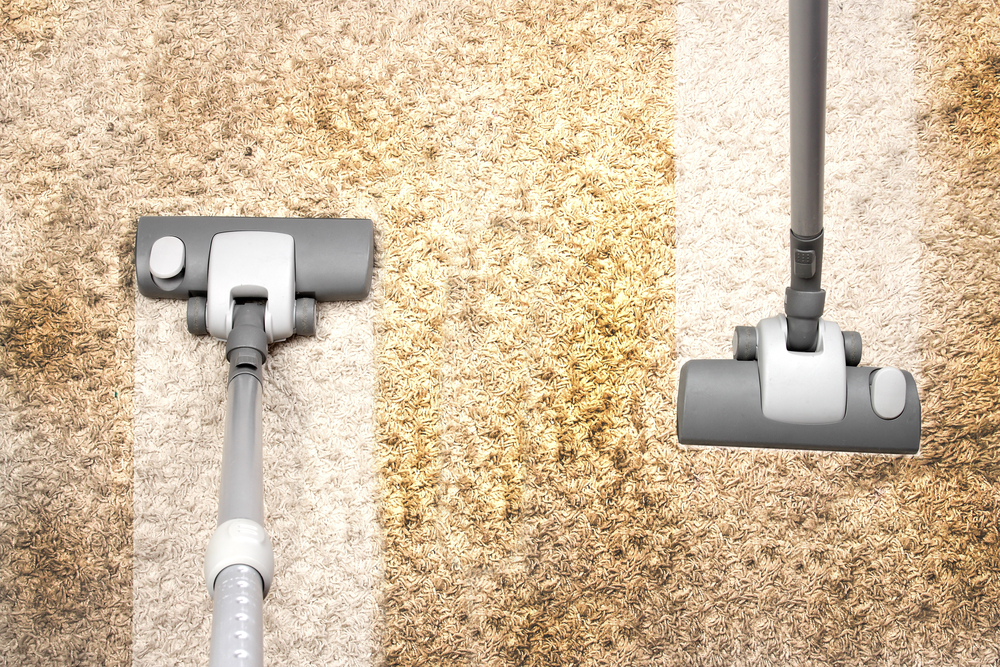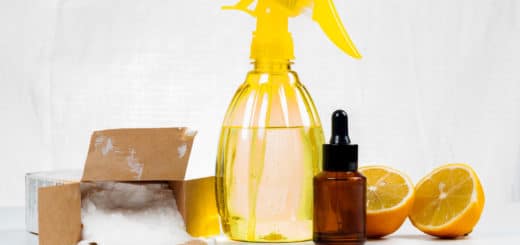Tips for Removing Mold from Carpeting
There are few things worse than experiencing floodingFlooding is the overflow or accumulation of water in areas t... More or water damage in your home. Whether it is from a plumbing issue, a leaky appliance, or a sewageSewage is wastewater containing biological and chemical cont... More backup, it can be costly to fix. If you have water damage in your home and your carpet gets wet, it is important to address this immediately so that the carpet does not become affected by moldMold is a type of fungus that grows in damp or humid conditi... More.
Materials such as carpeting that become affected by water or floodingFlooding is the overflow or accumulation of water in areas t... More are vulnerable to moldMold is a type of fungus that grows in damp or humid conditi... More growth. MoldMold is a type of fungus that grows in damp or humid conditi... More grows in areas where there is an abundance of moisture, and it feeds on organic materialsOrganic materials are derived from living organisms, such as... More found in carpet fibers. If given enough time, moldMold is a type of fungus that grows in damp or humid conditi... More can cause severe, permanent damage to the carpeting. In addition to damaging your carpet, the moldMold is a type of fungus that grows in damp or humid conditi... More could spread to the rest of your home and cause additional damage. The presence of moldMold is a type of fungus that grows in damp or humid conditi... More is also a threat to your health which makes it crucial to address moldMold is a type of fungus that grows in damp or humid conditi... More in your carpet right away.
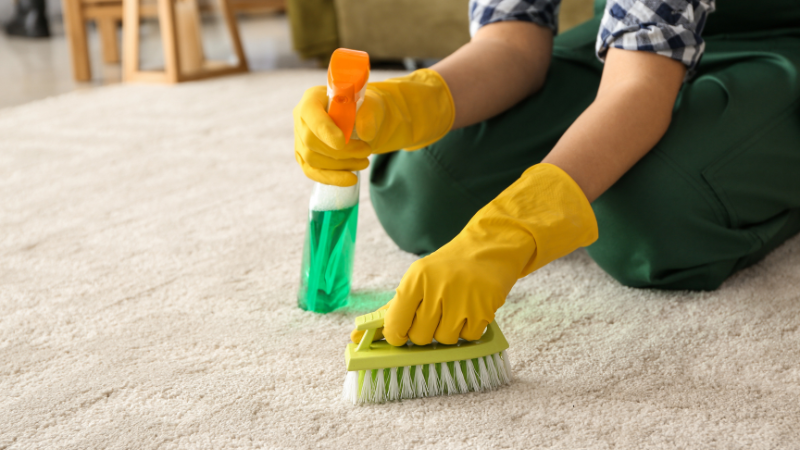
Removing Mold from Your Carpet
It is important to remove moldMold is a type of fungus that grows in damp or humid conditi... More from your carpet to limit the damage and prevent it from spreading to other areas of your home. While you may be able to remove small amounts of moldMold is a type of fungus that grows in damp or humid conditi... More from your carpeting, you should call a mold remediation professional for situations you can’t handle yourself.
Here are the steps you should follow to remove moldMold is a type of fungus that grows in damp or humid conditi... More from your carpet:
- Ventilate the room:
To get the smell and moisture out of the room, open all windows and remove any items that are wet such as carpets and furniture and put them in a safe place so they can dry out. Always make sure you are using protective equipment such as gloves, facemask, and eye protection.
- Pick up the carpet:
If your carpet is affected by a small amount of moldMold is a type of fungus that grows in damp or humid conditi... More, you can attempt to clean it yourself. It is easier to cut the carpet out and replace it than it is to clean it.
- Use baking soda:
You can use baking soda to clean moldMold is a type of fungus that grows in damp or humid conditi... More as it will soak up bad odors as well as moisture. The following day, add vinegar to the moldMold is a type of fungus that grows in damp or humid conditi... More spots and scrub vigorously with a brush on the front and back of the carpet.
- Use a HEPA vacuum to vacuum up leftovers:
You should use a vacuum with HEPA filter very carefully. Always make sure to empty out any leftovers that you vacuum up into a trash bag so that you can keep moldMold is a type of fungus that grows in damp or humid conditi... More sporesSpores are microscopic reproductive units of fungi or mold t... More out of the air.
- Open windows and use a fan and a dehumidifierA dehumidifier is a device that removes excess moisture from... More:
After your carpet has been flooded, you should make sure to open all of the windows, set up a fan, and get a commercial grade dehumidifierA dehumidifier is a device that removes excess moisture from... More to dry out the areas.
- Anti-fungal spray can be used on carpet:
An anti-fungal spray is safe for carpeting and is a safer way to remove mold than using chemicals such as bleach. To use the anti-fungal spray, you will need to spray the area and let it sit for at least an hour. Then you can use a dehumidifierA dehumidifier is a device that removes excess moisture from... More to dry out the air. Next, you can use a scrub brush with warm and soapy water to remove any staining. Once the carpet has fully dried, make sure to spray it again and repeat the process of letting it sit and scrubbing the area. Finally, you will need to use a clean rag to blot the area and a dehumidifierA dehumidifier is a device that removes excess moisture from... More to dry the area. You should keep checking the carpet every 2 weeks to make sure the moldMold is a type of fungus that grows in damp or humid conditi... More has not come back.
- Use a steam cleaner:
A steam cleaner is a great way to clean mold from the carpet. The heat from the steam will help loosen the moldMold is a type of fungus that grows in damp or humid conditi... More and remove it from the fibers.
Preventing Mold in Your Home
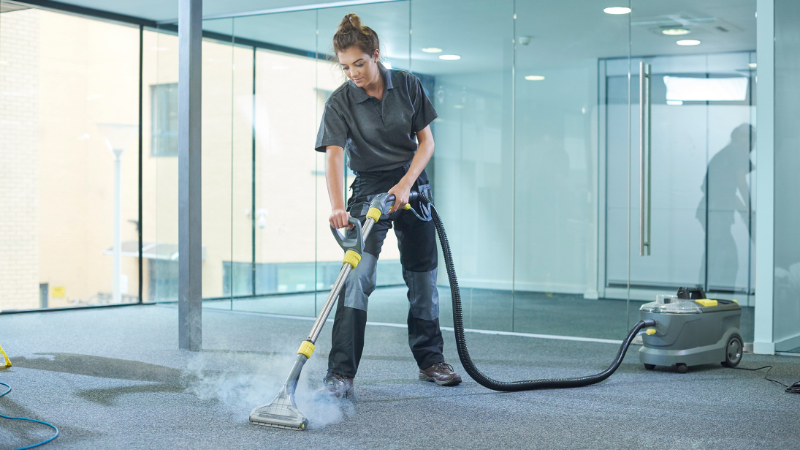
Although moldMold is a type of fungus that grows in damp or humid conditi... More can be cleaned from carpeting if you act quickly enough and use effective methods, the best thing you can do is prevent moldMold is a type of fungus that grows in damp or humid conditi... More from appearing in the first place. These tips will help you protect your home from moldMold is a type of fungus that grows in damp or humid conditi... More:
- If you have potted plants, make sure to have a mat between the bottom of the potted plant and your carpet to help avoid mold.
- If you use firewood, make sure you have a moisture barrier between firewood and carpet.
- It is important to have a dehumidifierA dehumidifier is a device that removes excess moisture from... More if your home is generally humid. This will help eliminate moisture in the air. The humidityHumidity is the amount of moisture or water vapor present in... More level in your home should always be less than 60%. Running your air conditioner can also help lower the humidityHumidity is the amount of moisture or water vapor present in... More.
- By using an air purifier, you are able to clean the air and get rid of moldMold is a type of fungus that grows in damp or humid conditi... More sporesSpores are microscopic reproductive units of fungi or mold t... More. This is especially great for those that are sensitive to moldMold is a type of fungus that grows in damp or humid conditi... More.
- Try to run your air conditioning on the “auto” setting as opposed to the “on” setting which will allow your home to have lower humidityHumidity is the amount of moisture or water vapor present in... More.
Simple Home Maintenance to Prevent Mold
It is crucially important to perform simple maintenanceMaintenance is the routine care, inspection, and repair of a... More to prevent moldMold is a type of fungus that grows in damp or humid conditi... More from forming in your home. Here is some home maintenanceMaintenance is the routine care, inspection, and repair of a... More you can do to prevent moldMold is a type of fungus that grows in damp or humid conditi... More:
- Make sure you replace your air filter in your home every 3 months. Your filter should be made to filter out moldMold is a type of fungus that grows in damp or humid conditi... More and dust.
- You should vacuum your carpet often to avoid moldMold is a type of fungus that grows in damp or humid conditi... More sporesSpores are microscopic reproductive units of fungi or mold t... More from getting into the carpet.
- Your home should regularly be painted on the outside with quality paint to prevent moldMold is a type of fungus that grows in damp or humid conditi... More.
- Maintain your roof by regularly checking if you have missing shingles and that your gutters are clean.
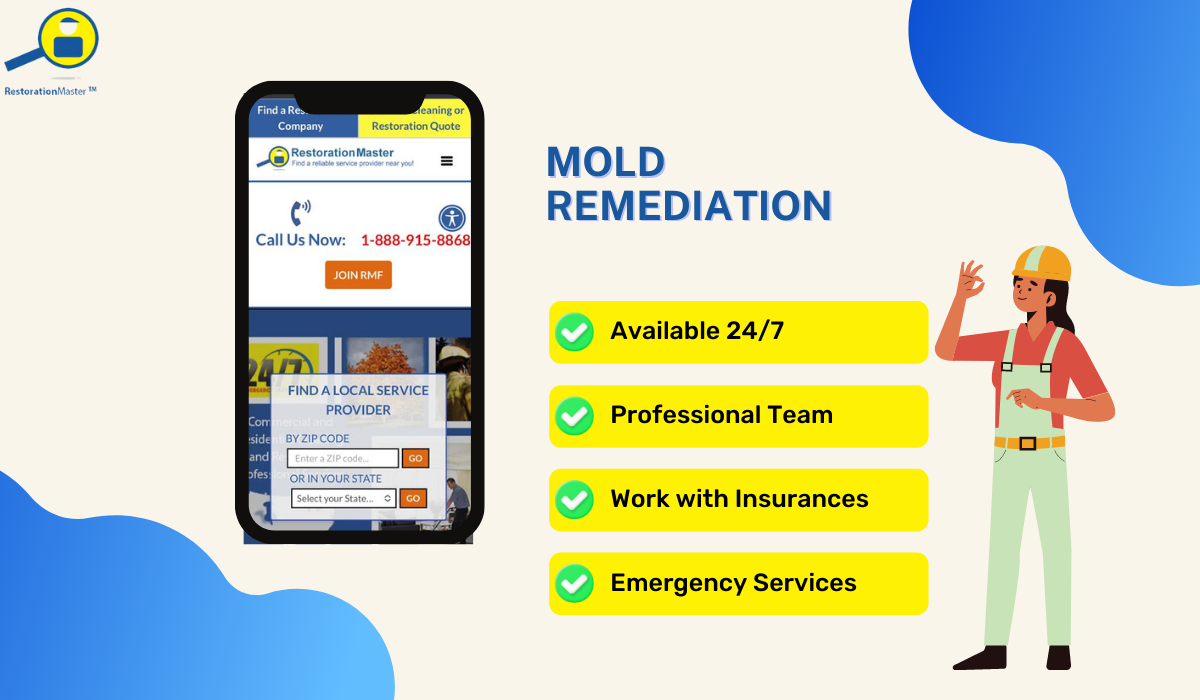
If you’ve noticed moldMold is a type of fungus that grows in damp or humid conditi... More on your carpet and the area is larger than 10 square feet, you need to get it cleaned by a professional. Getting moldMold is a type of fungus that grows in damp or humid conditi... More removed right away is very important to prevent it from spreading and causing more damage to your home or your health. Mold remediation professionals can help you clean moldMold is a type of fungus that grows in damp or humid conditi... More quickly and efficiently and make sure it does not come back.











